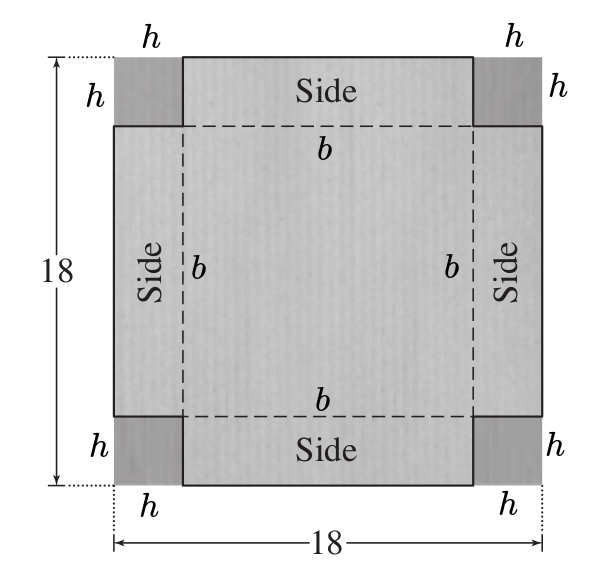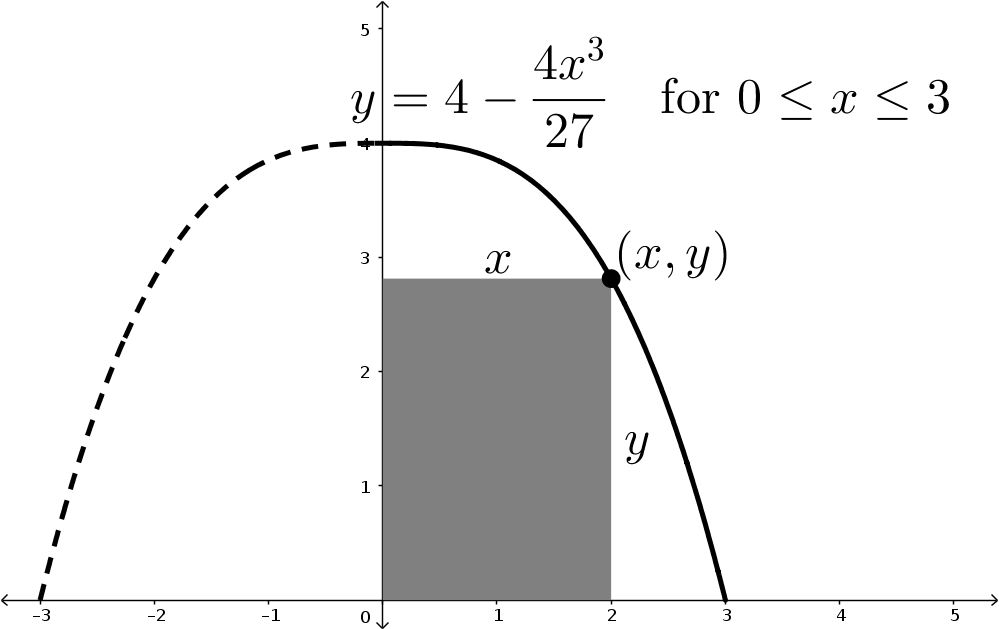Example 4.5.1.
Find two numbers that add to get 14 but give the largest possible product.
That’s it. That’s the problem. It’s not super interesting, right? Let’s think about how we’ll solve it.
Solution 1.
First, we want to think about our two numbers. We’ll need variable names for these. You can use whatever letters you’d like here: I’m going to be boring and pick \(a\) and \(b\) as the names of my two numbers. What do we know about \(a\) and \(b\text{?}\)
The first thing that we know is that \(a+b=14\text{.}\) This isn’t a huge amount of information, but it does provide us with a nice connection between our numbers. If we know what one number is, then we automatically know the second one: if one number is \(4\text{,}\) then the other number is whatever we need to add to \(4\) to get \(14\text{.}\)
We also know that we’re interested in the product: \(P=ab\text{.}\) We don’t, currently, know anything about this product other than the fact that we want it to be large. Ok so automatically, we know that both \(a\) and \(b\) need to be positive: if we had one number that was positive (like \(15\)) and one number that was negative (like \(-1\)), then the product will be negative, and even though they add to \(14\text{,}\) we are not going to get a big product.
So we know that for both of these numbers \(a,b\geq 0\text{.}\)
This doesn’t seem like a lot of information, but we can put it all together really nicely. For instance, I can manipulate the fact that these two numbers add to get \(14\) into an equation that tells me what the value of one number is based on the other:
\begin{equation*}
a+b=14 \longrightarrow b=14-a\text{.}
\end{equation*}
I can also write my product as an actual function of a single variable:
\begin{equation*}
P=ab \longrightarrow P(a)=a(\underbrace{14-a}_{b})\text{.}
\end{equation*}
Lastly, I actually know a domain for this function: we know that \(a\geq 0\text{,}\) but since \(b\geq 0\text{,}\) then \(a\leq 14\text{.}\) We can’t have a number larger than \(14\text{,}\) since the other number would be negative.
Ok, so we have a function representing the product, \(P(a)=a(14-a)\) and a domain for that function, \([0,14]\text{,}\) and we know we want to find the maximum for it. This is a calculus problem that we can actually do! Take a moment to do it.
Solution 2.
\begin{align*}
P(a) \amp= 14a-a^2 \\
P'(a) \amp = 14-2a
\end{align*}
Now we can find the critical points.
\begin{align*}
P'(a) \amp =0\\
14-2a \amp =0\\
-2a \amp = -14\\
a \amp =7
\end{align*}
We also know that the ending points at \(a=0\) and \(a=14\) are critical, since the derivative cannot exist.
There is a point on the product function when \(a=7\) where we have a horizontal tangent line. Does this represent a maximum or a minimum? We have some options for how to do this:
-
FDT:Since this is the only turning point, it must be the global maximum!\(a\)\([0,7)\)\(7\)\((7,14]\)\(P'\)\(\oplus\)\(0\)\(\ominus\)\(P\)\(\nearrow\)\((7,49)\)\(\searrow\)increasinglocal maxdecreasing
-
SDT:\begin{align*} P''(a) \amp = -2\\ P''(7) \amp \lt 0 \end{align*}Since the function is concave down at this point, then we know that the function reaches a local maximum when \(a=7\text{.}\) Since this is the only turning point, it must be the global maximum!
-
EVT:\(a\)\(P\)\(0\)\(0\)global minimum\(7\)\(49\)global maximum\(14\)\(0\)global minimum
However we do this, we find that there is a maximum product when \(a=7\text{.}\) What is the second number, \(b\text{?}\) Well we know that they add to 14, so:
\begin{align*}
b=14-a \longrightarrow b \amp =14-7\\
\amp = 7
\end{align*}
So our two numbers are \(7\) and \(7\text{,}\) and they multiply to get \(49\text{,}\) the biggest possible product between two numbers that add to \(14\text{.}\)



